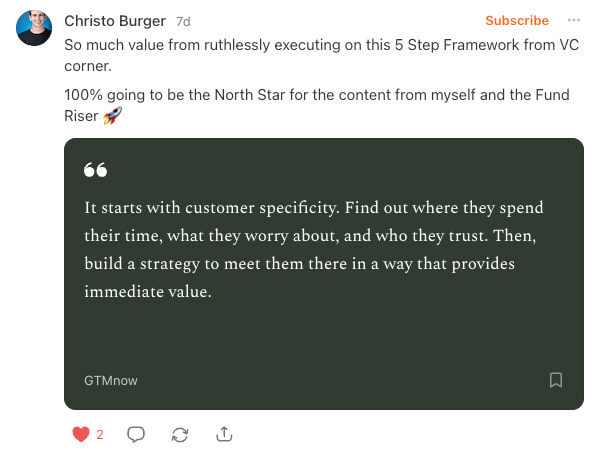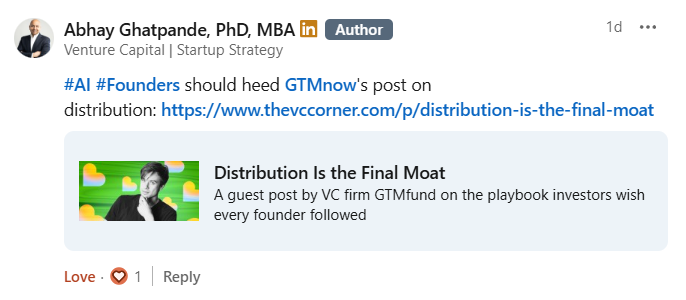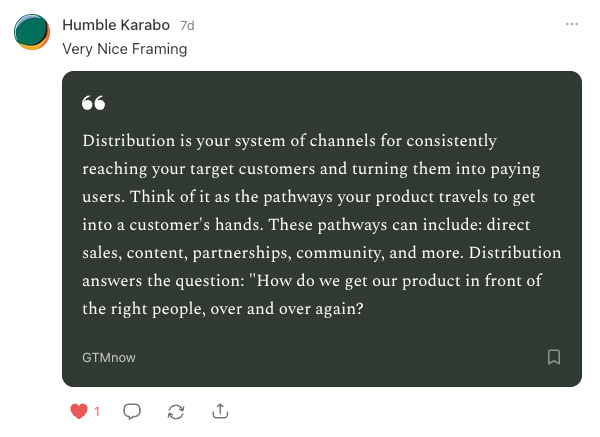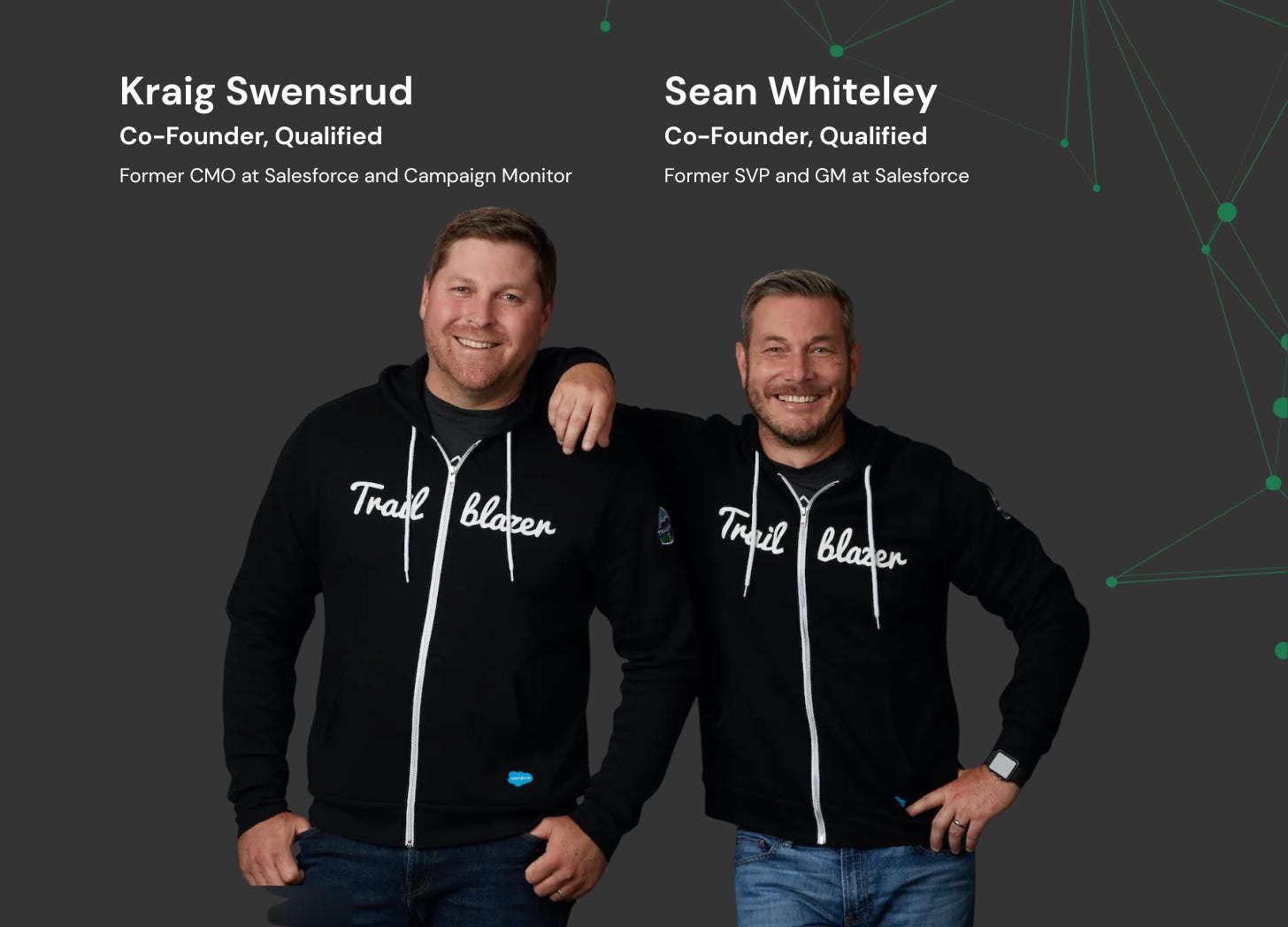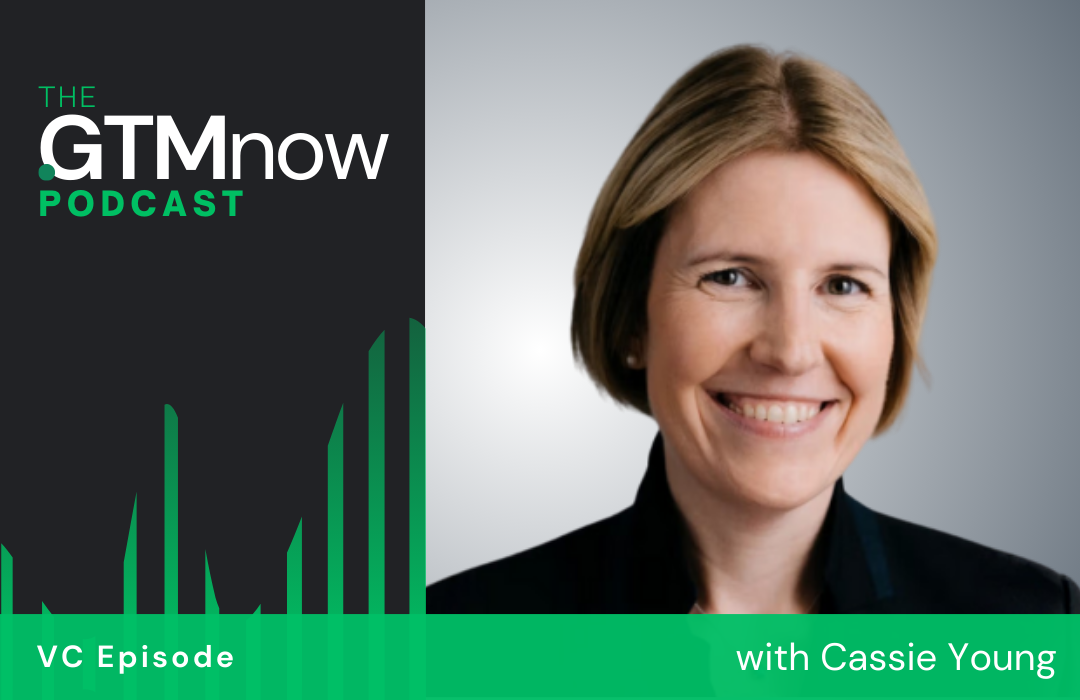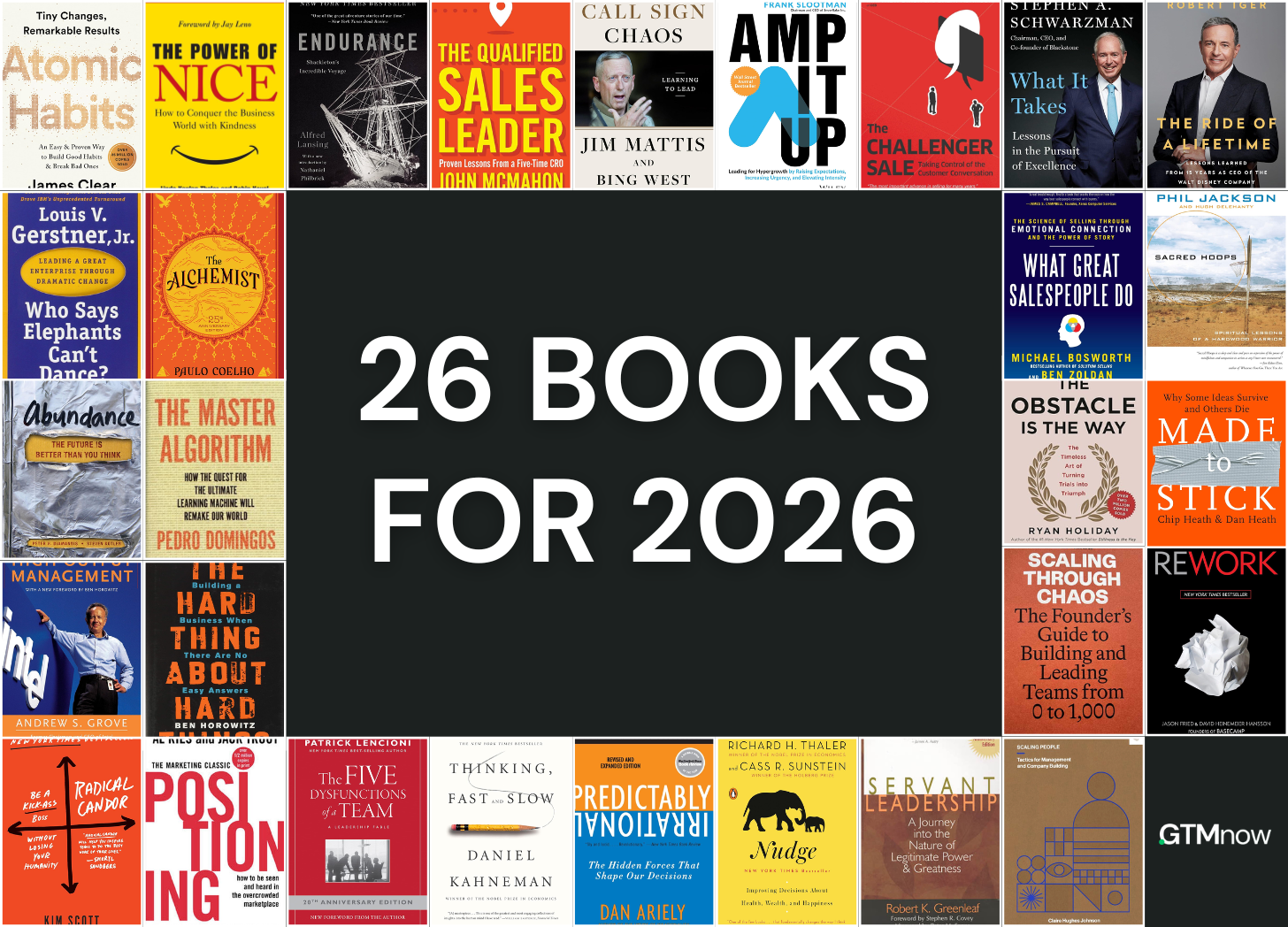The First Sales Hire Playbook
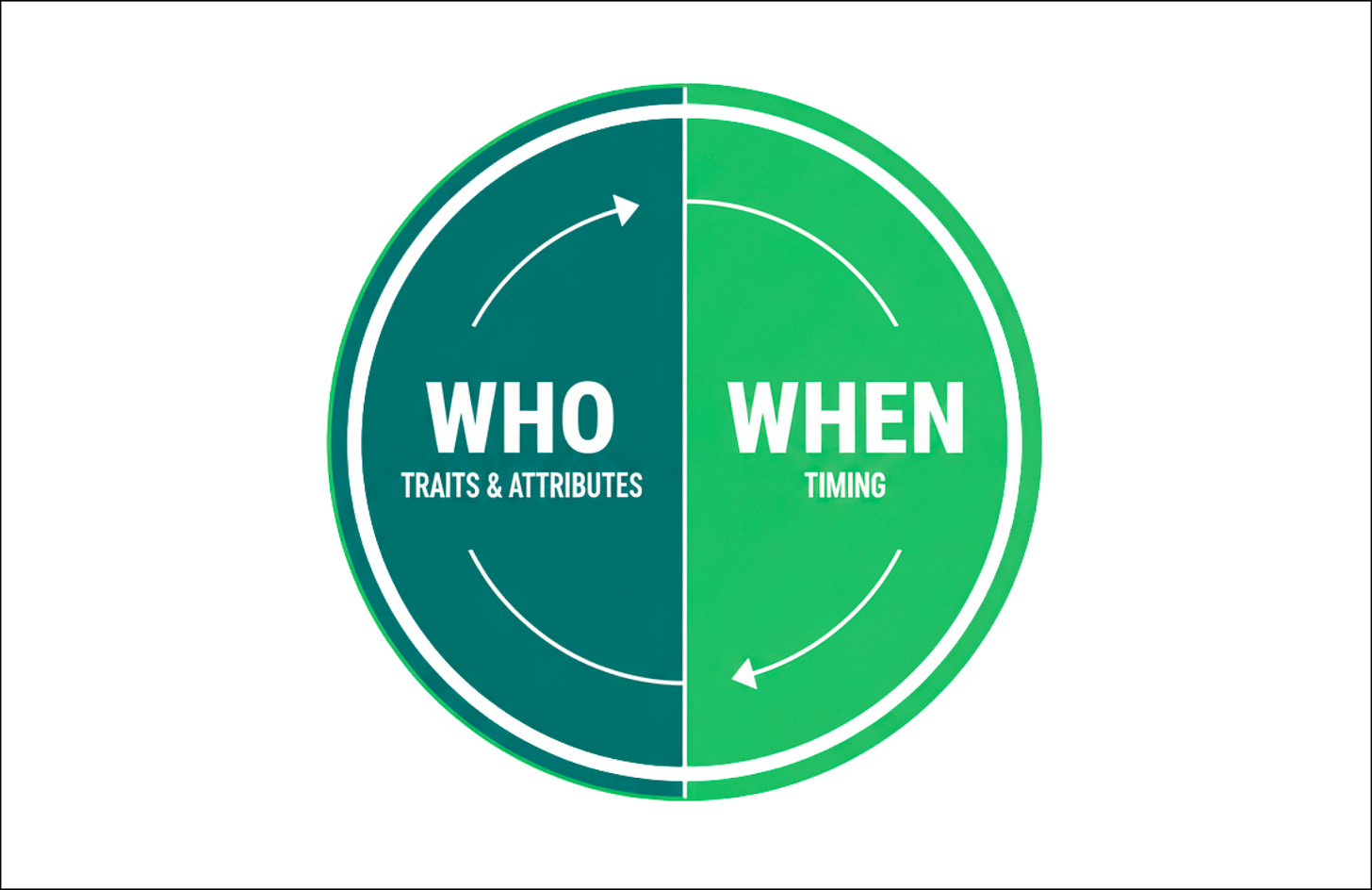
Hello and welcome to The GTMnow Newsletter – the media brand of VC firm, GTMfund. Build, scale and invest with the best minds in tech.
This is one of the most common questions that we get from early-stage founders:
“How do I make my first sales hire?”
For founders, hiring the first sales rep is one of the most critical inflection points. Get it right and it’s a massive growth unlock. Get it wrong and it can be detrimental.
“About half of first sales hires don’t make it past their first year.”
While it often happens, it isn’t a hire you can afford to get wrong. The wrong fit can stall your momentum, waste precious runway, and send you back to square one.
This is where studying patterns comes in handy. In venture, you’re constantly pattern matching. This is also helpful for key hires like this. What are the attributes behind successful first sales hires? People like: Florin Tatulea (first sales hire at Loopio – acquired), Dave Goldstein (first sales hire at Braze – IPO), Zander Steele (first sales hire at Hyperscience – grew it $1M to $30M ARR), Martin Roth (first sales hire at Levelset – acquired).
Half of the equation is who – the traits and attributes.
The other equally important, if not most important, half is when – the timing that you bring this person in.

This playbook will walk you through how to set up for success on hiring your first sales rep.
Thank you to the many contributors, including Joe DiMento (first sales hire at multiple startups), Mike Molinet (Co-Founder of Thena and Branch) and more.


There’s a VIP founder lunch at ApolloNEXT!
They’re hosting a private founder lunch at ApolloNEXT during SF Tech Week. 50 founders.
Picture this: mini-chats with Apollo execs who scaled the company from $10M → $150M ARR. No stage, no panels. You sitting close enough to them to ask the questions that actually matter, surrounded by founders who get it.
Here’s how to get your spot:
- Step 1: Register for ApolloNEXT
- Step 2: Apply here for the lunch
- Step 3: Keep an eye on your inbox for updates
Growth is messy and AI is moving fast. This is an opportunity to trade frameworks and tactics with people who have “been there, done that.”
Seats are limited, register and apply now.
First, when is it time to make the first hire?
Before you hire your first AE, you need some level of product-market signal. Not product-market fit (PMF), but a few real customers outside your network who are willing to pay. Mike Molinet breaks the zero-to-one journey into four micro-stages:
- Design partners: You get your first few users via personal networks.
- Paid early customers: People you don’t know start signing up.
- Assisted sales: The founder sells, with part-time help from a contractor or junior hire.
- Transition to repeatable sales: You’re ready to bring in an AE.
You don’t need a coin-operated sales motion, but you should have early proof that:
- Buyers will pay for the product.
- You know your ICP.
- You can close deals from cold or inbound leads, not just relationships.
You’ll know it’s time when you can check these three criteria:
- You’ve achieved repeatable, founder-led sales. You’ve personally closed at least a handful of deals. You have a good idea of who your Ideal Customer Profile (ICP) is, what their pain points are, and what triggers them to buy. This isn’t about closing 50 deals, it’s about closing 5-10 and understanding why you won them (this is also what investors care most about).
- You have a clear, documented sales narrative. You can articulate your product’s value proposition in a compelling and consistent way. You have a pitch, a demo script, and a pricing model that works. It doesn’t have to be perfect, but it must exist and be transferable.
- Your time is the bottleneck. You’ve reached a point where you’re spending 50% or more of your time on sales and can no longer keep up with both selling and building the business. The inbound leads are starting to pile up, or your outbound efforts are yielding so many promising conversations that you’re drowning.
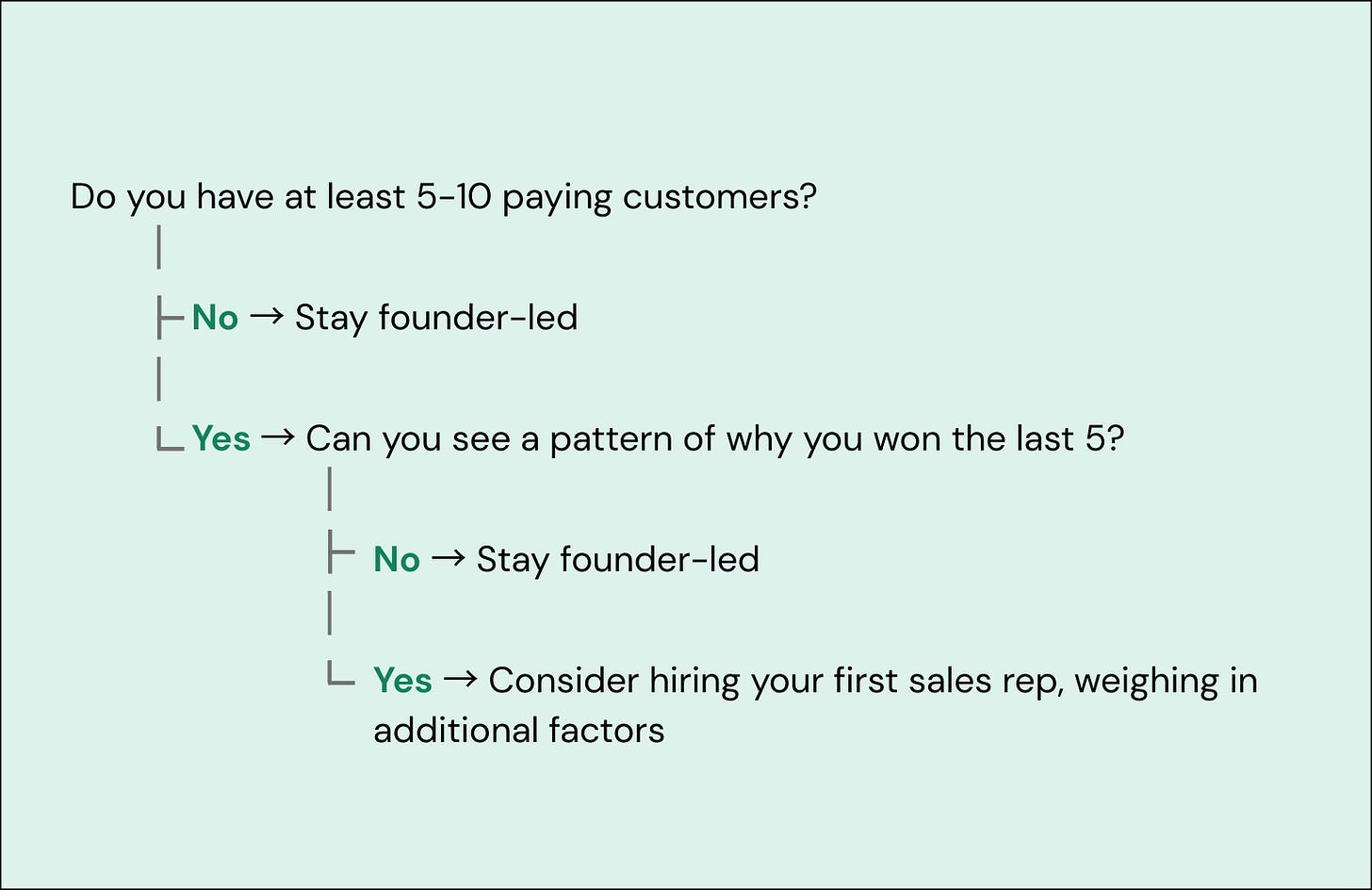
“The biggest risk of hiring too soon is outsourcing your learning.” — Mike Molinet
If you bring in a sales leader too early, they might get tasked with designing the process from scratch without knowing the customer. Founders often over-assign too much: pipeline generation, outbound playbooks, CRM setup, messaging. Start with a doer, not a strategist.
Who to hire
This is not a traditional sales hire. You’re not looking for a seasoned enterprise AE from Salesforce, you’re looking for a Swiss Army Knife – a hybrid player who can do a little bit of everything. Your first sales rep must be a hunter, a closer, a product evangelist, and a partner to you, the founder.
They should also be a rep, not a leader.
“Get to a semi-repeatable motion first. Leaders make sense once the team’s too big to manage directly and you know what you need them to own.”
From all the perspectives shared, we’ve distilled the ideal profile of a first sales hire into 5 characteristics:
1. Startup-tested and comfortable with zero infrastructure. You need someone who has already lived the chaos of an early-stage startup. This person should be comfortable building pipeline without a safety net and find energy in an environment with no brand recognition, no marketing team, and no polished collateral.
2. A full-stack generalist. Your first rep is a hybrid of an SDR and an AE. They can find their own leads (outbound), qualify them, and close them. They don’t need a perfectly optimized funnel to succeed.
3. A missionary, not a mercenary. Avoid “coin-operated” sellers who are only chasing a quota. You need someone who believes in the mission and is motivated by building something enduring. A missionary wants equity, is in it for the long haul, and will help you build a foundation, not just hit a number.
4. Fast learner and cross-functional collaborator. Speed of learning is a superpower. Your first rep isn’t just closing deals, they’re helping you discover the repeatable motion. Look for someone who will record every lesson, feed insights back to product and leadership, and effectively help write the sales playbook while selling. Early AEs spend as much time with engineering and product as they do with customers, so they must be able to translate customer feedback into product insights and work well with technical teams.
5. Tough-minded grit and resourcefulness. Probe for evidence of personal or professional challenges overcome. You need someone who has “been through some stuff,” because early selling means constant rejection and course-correction. This person must be unfazed by “no,” persistent in their follow-ups, and able to find a way to win with limited resources.
Red flags to avoid:
- Comes from only big companies: They are used to a well-oiled machine, brand recognition, and inbound leads. They may struggle in a scrappy, zero-to-one environment where they have to wear multiple hats and build the playbook from scratch.
- Relies too heavily on enablement or SDR support: They ask, “What’s my lead list?” or “When will the sales deck be finished?” instead of just getting started.
- Sees themselves as a “closer” vs. a customer guide: This mindset often leads to short-term thinking and can damage long-term customer relationships.
How many to hire
Now, the question shifts from who to hire to how many to hire. Ultimately, the decision depends on your specific preference and context, but these are the factors that you can consider.
The benefit to hiring two
Hiring two sales representatives, staggered by 30-45 days, is the preferred approach by many when you can clearly narrate your last five wins from end-to-end, have enough pipeline to keep two reps productive, and have at least 12-18 months of runway after accounting for both OTEs.
The advantage of this is that it creates faster learning loops by allowing you to A/B test messaging, ICPs, and tactics. You can also quickly separate a “people problem” from a “process problem.” The side-by-side activity and conversion rates also provide a benchmark for what “good” looks like, helping you establish expectations. You can test different archetypes, comparing a data-driven prospector with a relationship-heavy multi-threader to find what works best for your motion. Finally, it helps with morale, as it avoids the loneliness of being the only seller and provides a peer for collaboration, which helps with both ramping and retention.
The benefit to hiring one
While two is often ideal, there are good reasons to start with a single hire. Your runway might be tight, and adding two OTEs could significantly cut into cash. Alternatively, your sales signal might not be strong enough to hire two with confidence.
If you start with one, you must implement a fast “gate” for hiring the second. This means you should pre-commit to a trigger to open a second requisition, such as hitting 10 Sales Qualified Leads (SQLs) per month and a discovery-to-demo conversion rate of at least 25% for two consecutive months. You should hire the second representative as soon as that gate is hit, maintaining the 30 to 45-day stagger behind the first.
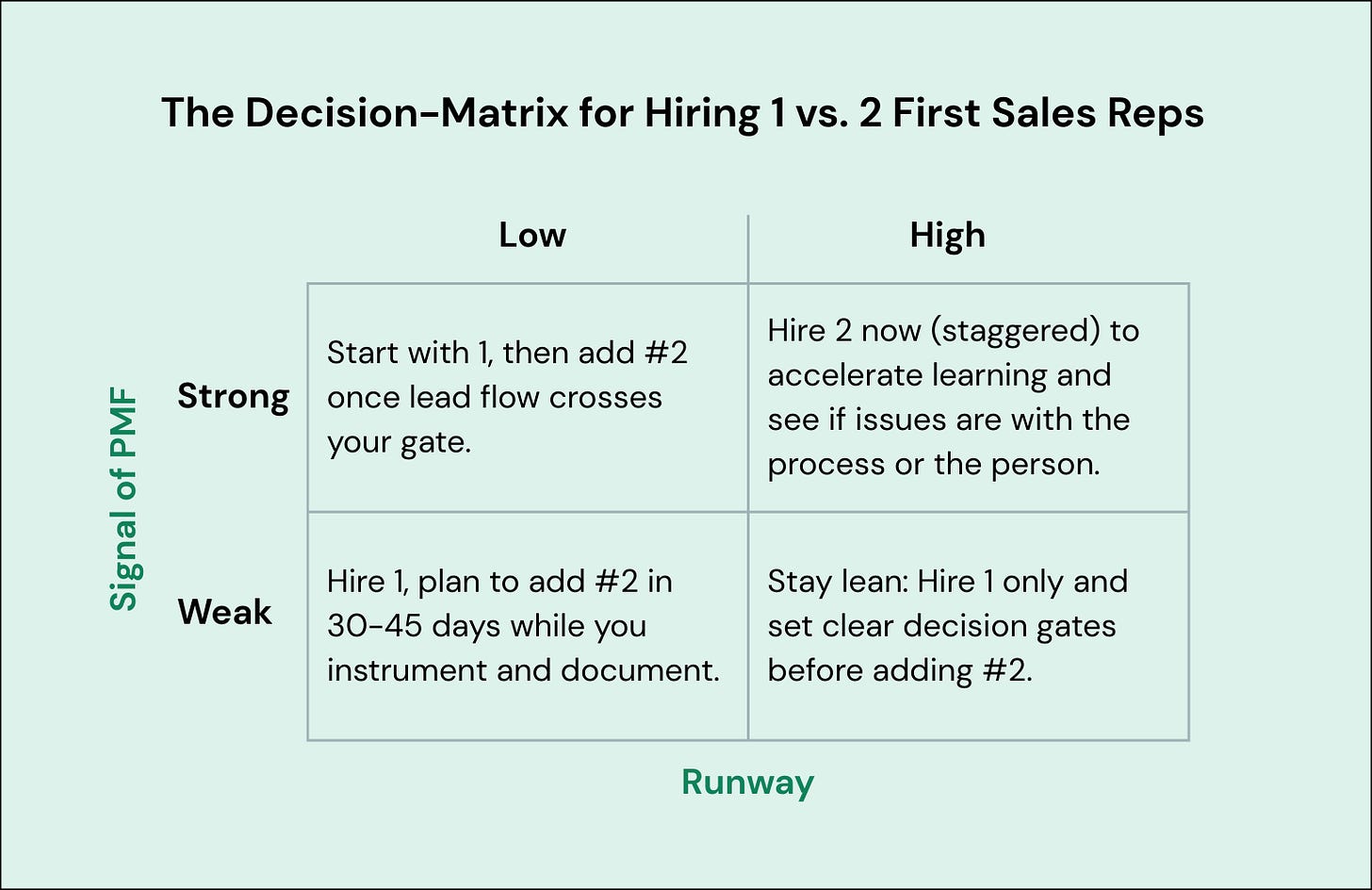
How do you interview for a function you might not know yourself?
If you’re a founder who hasn’t sold much, it can be tricky to vet great sales talent.
The best approach is to pull in sales leaders that are advisors, investors, connections, or affiliated with your company. This provides the domain expertise to complement your intuition and deep understanding of the company culture that you want to build.
Either way, use these tactics to assess:
- Have candidates run a mock discovery call or demo with you.
- Ask them to write a sample outbound email to a real prospect.
- Look for how they define a pipeline plan: which accounts they would target, what steps they would take in week one.
- Ask how they’d structure early-stage sales reporting (i.e. how to track learning, not just results).
Even more importantly, talk to their past managers. Ask:
- Did they thrive in ambiguity?
- How did they give feedback on product or pricing?
- Did they make other people better?
How to set them up for success
This is the part most startups skip, and it shows. If your first sales hire fails, it’s often not their fault.
Here’s how to set them up for success:
1. Speed-run product knowledge
- Record a live demo and transcribe it. Give them the script.
- Ask them to create a “day in the life” of your ICP based on early customers.
- Get them into customer calls right away, even if they’re just shadowing.
2. Start prospecting on day 1
- Define your ICP in 5–7 hard criteria (not just “anyone with a budget”).
- Have them build a 50–100 account list with clear scoring.
- Use freelancers to speed up research and data entry.
3. Nail your CRM hygiene early
- Use a CRM from the very beginning, with no lapses in data entry.
- Create a simple stage-based pipeline: Lead > Contacted > Demo > Proposal > Negotiation > Closed.
- Track lead source, sales velocity, and conversion by stage.
4. Be intentional about feedback loops
- Set a weekly 1:1 with your AE. Share a standing agenda: pipeline review, 2-way feedback, what’s blocking them.
- Review losses together to identify if it’s pricing, messaging, ICP, or something else.
- Document what’s working and share with the team. This is your sales playbook in the making.
5. Avoid scope creep
- Your AE is not your RevOps lead, growth marketer, and founder whisperer all in one. Don’t ask them to do three jobs.
- Hire specialized help or advisors to fill in critical gaps while you scale.
7. Let go, but don’t disappear
As you grow, you’ll start to step back, but don’t vanish. Founders should:
- Sit in on calls periodically.
- Do skip-levels with customers and reps.
- Keep a feedback loop open.
“When you hire great people, you should be excited to give up control”
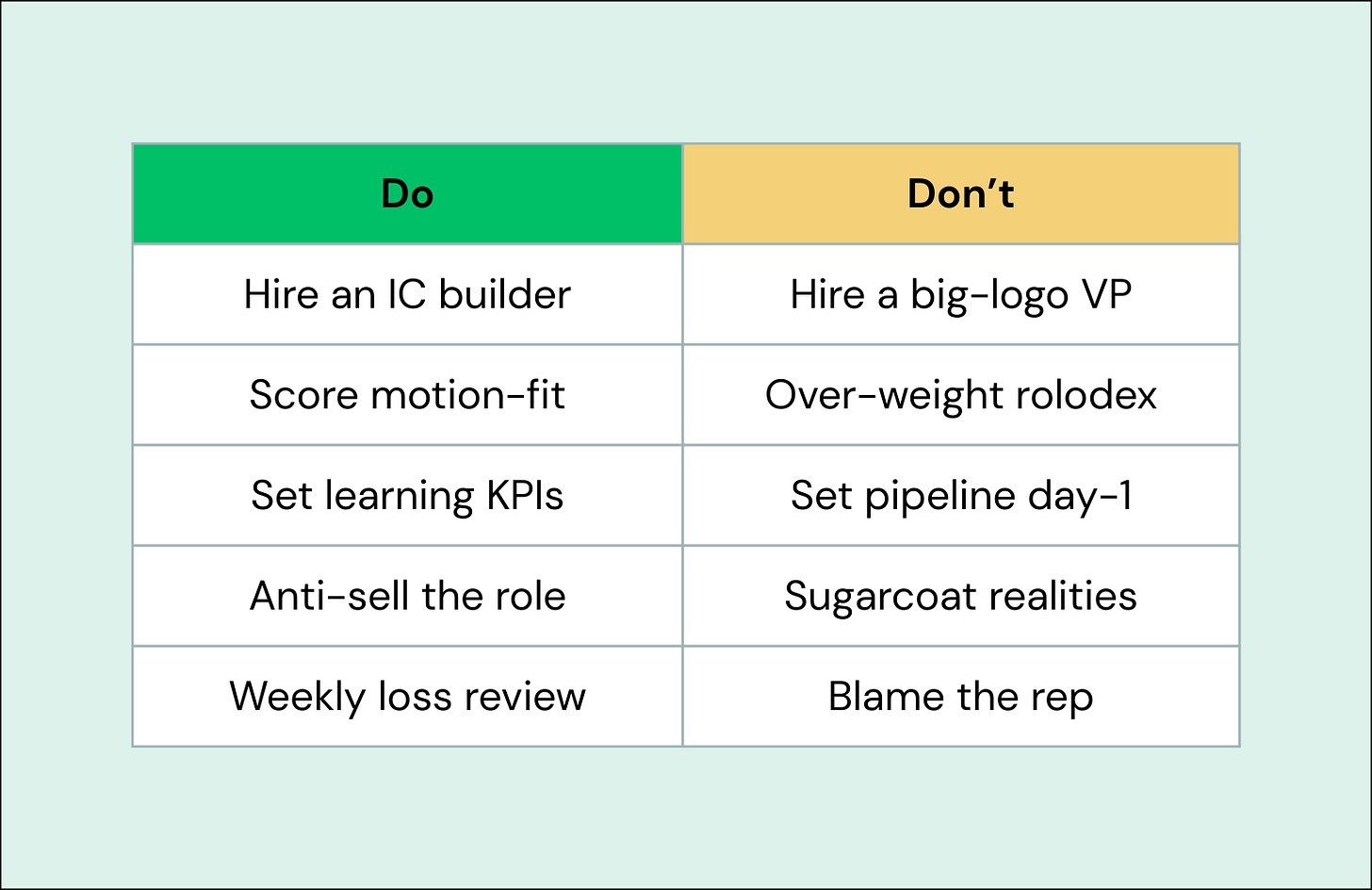
The right hire, supported by a clear, tactical playbook, is the key to turning your founder-led sales wins into a scalable, repeatable GTM engine.
Tag @GTMnow so we can see your takeaways and help amplify them.
More for your eardrums
Get a sneak preview here. For the full thing, listen on Apple, Spotify, YouTube or wherever you get your podcasts by searching “The GTMnow Podcast.”
Startups to watch
Centari – raised $14M to build the future of Deal Intelligence. Think M&A, financings, partnerships — deals where billions are on the line and speed and precision matter. Generic AI tools weren’t built for the legal complexity or risk tolerance these transactions require. That’s where Centari comes in.
Pocus – announced its next chapter: moving beyond signal aggregation to true decision-making intelligence. With the new Relevance Agent™ and Intelligent Inbox, Pocus gives reps clear next steps (who to contact, what to say, and when to act), turning data overload into trusted guidance that drives revenue.
More for your eyeballs
Netskope raised $908M in its U.S. IPO, pricing shares at $19 for a $7.26B valuation. The cloud security firm grew revenue to $328M in the first half of 2025 as demand for cybersecurity continues to surge, and will trade on Nasdaq under the ticker NTSK.
Klarna broke fintech’s IPO drought, listing on the NYSE at a $15.1B valuation and raising $1.37B. Once valued at $45B, the BNPL giant reset with cost cuts, stricter underwriting, and consecutive quarters of operating profit—its measured comeback a blueprint for peers like Stripe, Chime, and Plaid.
Apollo unveiled what it calls the world’s first true go-to-market AI Assistant—automating prospecting, research, list building, outreach, and campaign analysis in minutes, all through plain English prompts. The product is now in public beta ahead of its full debut at ApolloNEXT on October 9.
Manny Medina (Founder of Paid, ex-Outreach) says he’s never hiring senior execs again. On How I Hire, he shares why his new playbook flips tradition: AI before people, junior talent + fractional advisors instead of VPs, mission charts over org charts, and weekly demos to drive accountability.
Hottest GTM jobs of the week
- Head of Product Marketing at Patch (Hybrid – San Francisco)
- Revenue Operations Lead at Capchase (Hybrid – New York)
- GTM Enablement Manager, Upmarket at Vanta (Remote – US)
- Strategic Customer Success Manager, CPG at Writer (Hybrid – New York)
- Growth Marketing Manager at Clarisights (Hybrid – Bengaluru)
See more top GTM jobs on the GTMfund Job Board.
If you’re looking to scale your sales and marketing teams with top talent, we couldn’t recommend our partner Pursuit more. We work closely together to be able to provide the top go-to-market talent for companies on a non-retainer basis.
GTM industry events
Upcoming events you won’t want to miss:
- Pavilion GTM Summit: September 23-25, 2025 (Washington, DC)
- National Mall Walk with GTMfund: September 25, 2025 (Washington, DC)
- Dreamforce: October 14-16, 2025 (San Francisco, CA)
- GTMfund Dinner (private registration): October 22, 2025 (Austin, TX)
- GTMfund Dinner (private registration): November 18, 2025 (Toronto, ON)
- GTMfund Dinner (private registration): November 19, 2025 (New York, NY)
- GTM x Founder Event (private registration): November 20, 2025 (New York, NY) – if you’re an AI-focused founder in NYC, hit reply to get the details
GTMnow community love
Some GTMnow community (founder, operator, investor) love to close it out – we appreciate you.
